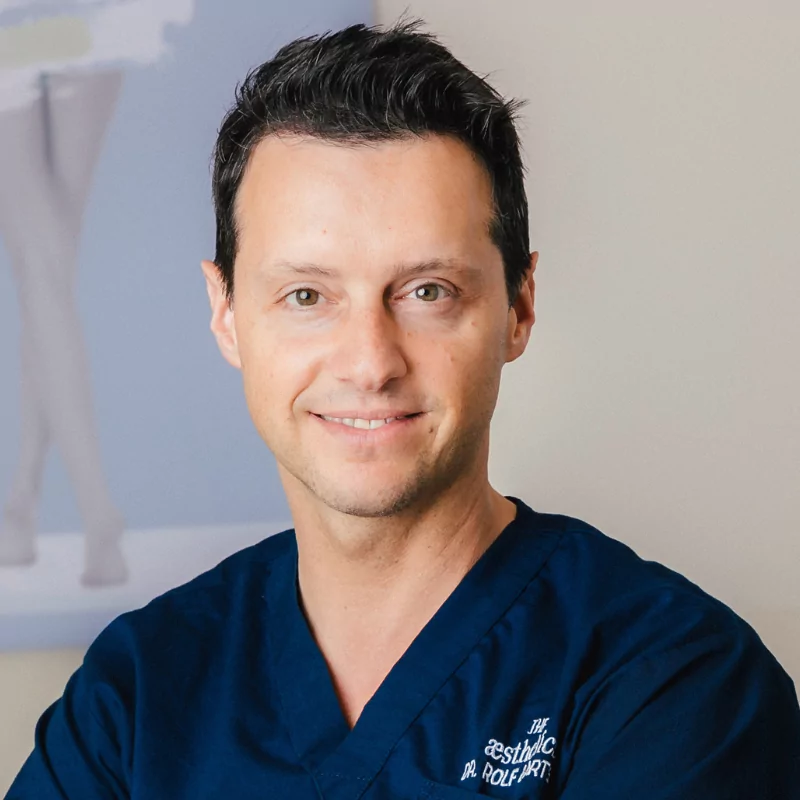Testimonial breast augmentation
9. October 2017
Before the surgery I was very excited, but then when...



The smell of sweat and sweat stains are not pleasant for anyone. Who doesn’t know them, the dark spots that become visible in the armpit area with preference on white blouses or shirts? But not all people sweat the same amount – and not all people suffer equally.
WHAT IS PRIMARY HYPERHIDROSIS?
Increased sweating can have various causes. Since sweating is often a symptom of illness or hormonal changes in the body, it is always advisable to first investigate the cause before focusing on treating the symptoms alone. If heavy sweating is present in an otherwise healthy person, it is referred to as “primary hyperhidrosis”. This can occur in various places, often for example on the soles of the feet (sweaty feet) or palms of the hands. About 1 to 5 people out of 100 have primary hyperhidrosis.
From a health point of view, this is absolutely harmless for those affected. However, some people find it massively distressing, so that their lives and social interaction are also severely restricted.
HOW SWEAT ODOR DEVELOPS
When we sweat, not only the sweat glands but also the neighboring odor glands secrete secretions. If this mixture then comes into contact with bacteria, which are always found on the surface of the skin, when it escapes, the familiar, unpleasant odor is produced. Sweat production is controlled by our autonomic nervous system, by the parasympathetic nervous system. It is responsible for the automated processes in the body and cannot be actively influenced.
WHAT ARE THE TREATMENT OPTIONS FOR EXCESSIVE SWEATING?
The simplest and most widespread method of curbing sweating is deodorants. These can either contain minerals that prevent odor from developing or they can temporarily block sweat glands to stop secretion.
A popular component in deodorants – although increasingly rare – are aluminum salts. They are controversial because it is suspected that they travel through the lymphatic system in the body and can sometimes trigger serious illnesses. Here, however, the study situation is still quite thin. In other words, it is not known for sure. To be on the safe side, many deodorant manufacturers now do not use aluminum additives, which in turn has another unfavorable side effect: The deodorants don’t work as well.
HOW CAN THE DOCTOR HELP?
If deodorants are the mildest form of treatment, at the other end of the spectrum is cutting the nerves that control the sweat glands. The laparoscopic procedure cuts off communication between the parasympathetic nervous system and the glands. For people who really sweat a lot, this is an effective option, but it is rarely done.
Another option is to suction out the sweat glands. This works at least partially, sweat production is weakened locally. However, it cannot be completely prevented, since many sweat glands are located in the skin, and with suction you always remove only those that are located below the skin in the fatty tissue.
SWEAT GLAND TREATMENT WITH MICROWAVES
A fairly new form of treatment is miraDry®. In this non-invasive procedure, the sweat glands are destroyed by microwaves; nothing happens to the surrounding tissue. Here, too, the effect is good, but sweating is not completely prevented.
HOW BOTULINUM TOXIN WORKS AGAINST SWEATING
Botulinum toxin ( Botox® or Bocouture® ) is used to inhibit the muscles of the sweat glands and the olfactory glands. As a result, these can no longer eject their secretions – an almost 100% reduction in sweat occurs. Since this is a local treatment, the rest of the body – and therefore the rest of the sweat production – remains unaffected.
For the body, sweat has an important excretory and detoxification function, and it also serves our cooling or thermoregulation purposes. However, sweat in the armpit only accounts for two percent of total sweat secretion, which is why it is no problem for the body to do without it.
DO I SWEAT MORE IN OTHER PLACES IF I SUPPRESS SWEATING LOCALLY?
Theoretically, yes. In practice, the difference is not noticeable, since the 2% mentioned is distributed over the entire body surface.
WHAT COSTS SHOULD I EXPECT?
Depending on the size of the treated area, about €590 – €690.
This is, admittedly, somewhat expensive, as a significantly larger amount of Botox is required than, for example, for a facial treatment. Caution is advised with cheap providers: A strong price reduction can only be achieved by a strong dilution of the active ingredient – and thereby by an equally strong “dilution” of the effect.
You need to load content from reCAPTCHA to submit the form. Please note that doing so will share data with third-party providers.
More InformationYou are currently viewing a placeholder content from Facebook. To access the actual content, click the button below. Please note that doing so will share data with third-party providers.
More InformationYou need to load content from reCAPTCHA to submit the form. Please note that doing so will share data with third-party providers.
More InformationYou are currently viewing a placeholder content from Instagram. To access the actual content, click the button below. Please note that doing so will share data with third-party providers.
More InformationYou are currently viewing a placeholder content from Instagram. To access the actual content, click the button below. Please note that doing so will share data with third-party providers.
More InformationYou are currently viewing a placeholder content from Google Maps. To access the actual content, click the button below. Please note that doing so will share data with third-party providers.
More InformationYou are currently viewing a placeholder content from X. To access the actual content, click the button below. Please note that doing so will share data with third-party providers.
More Information